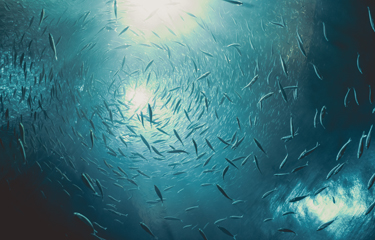Updated Sustainable Fisheries Partnership tool will improve tracking of fishery improvement efforts

With the intention of increasing accountability and transparency in reporting on fisheries improvement projects (FIPs), Sustainable Fisheries Partnership has published an update to its FIP Evaluation Tool. This revision, the fourth since the tool launched in 2007, clarifies guidelines for use, addresses the need for improved accountability, and more explicitly identifies connections between FIP actions and fishery improvements.
“These changes were driven by requests from seafood buyers and stakeholders to see increased verification of progress and a clearer linkage between FIP activity and impact on the water,” SFP Global Policy Director Brad Spear said. “More and better information can help us all do a better job.”
The FIP Evaluation tool provides progress ratings widely used by seafood buyers, non-governmental organizations, governments, academia, and other stakeholders to understand the environmental sustainability of a given fishery. The tool is a metric, rather than a standard, providing a snapshot in time of the fishery’s progress.
Updates included in this revision specifically address new requirements to improve the evaluation of the links between FIP tasks or actions and FIP results, increased transparency regarding the FIP’s actions that are driving the improvements. The evaluation process and time benchmarks have also been adapted to encourage more regular reporting of FIP actions. The tool will continue to use letter ratings on a scale from “A” through “E” for tracking progress.
Increased accountability also means the revised tool can more accurately reflect the progress and make sure that the FIP implementers are recognized for that progress, Spear said. In turn, the increased specificity of the progress ratings will also give seafood buyers more confidence in their purchases, according to Spear.
The impact of these revisions reach beyond SFP’s own work. SFP’s FIP progress ratings form the lead metric on FisheryProgress, the online platform for public reporting on FIPs. To this end, the new version of the FIP Evaluation Tool has worked to align language and definitions with those used on the FisheryProgress website to better support stakeholders using FIP progress ratings.
“FIP ratings are a valuable tool for FIP implementers like us to display our progress and efforts to suppliers, clients and larger audiences, and not simply show the scoring or performance of the FIP,” said Tom Evans, the FIP director at Portsmouth, England-based Key Traceability – an independent social and environmental auditing and consultancy firm. “This monthly measure allows us to monitor the progress of all of our active FIPs against the same reference to ensure targets are being met and changes are actively occurring. The revised FIP rating system led by SFP should add even more dynamism to this already valuable process by ensuring there is a stronger pressure for FIPs to continuously improve."
Following the formal launch, FIPs will get a grace period of three months – until October 2021 – to allow them to adjust to the new requirements and time benchmarks. FIPs will continue to be evaluated and rated against the current FIP Evaluation Tool until the end of the grace period.
Jennifer Wandler, the senior director of category management for seafood at US Foods, a leading foodservice company that supplies about 300,000 restaurants and foodservice operators throughout the U.S., said the updated tool will help her make critical purchasing decisions.
“At US Foods, we rely on Sustainable Fisheries Partnership’s FIP ratings to guide and evaluate our seafood purchases,” Wandler said. “Our corporate commitment to sustainable seafood sourcing includes purchasing seafood that is either certified to a GSSI-benchmarked standard or coming from an ‘A’ to ‘C’-rated FIP. Ongoing revisions to improve the accuracy of the evaluation tool will make it even easier for us to ensure our purchases from FIPs are making progress and improvements.”
Photo courtesy of Travi B Photography/Shutterstock






Share